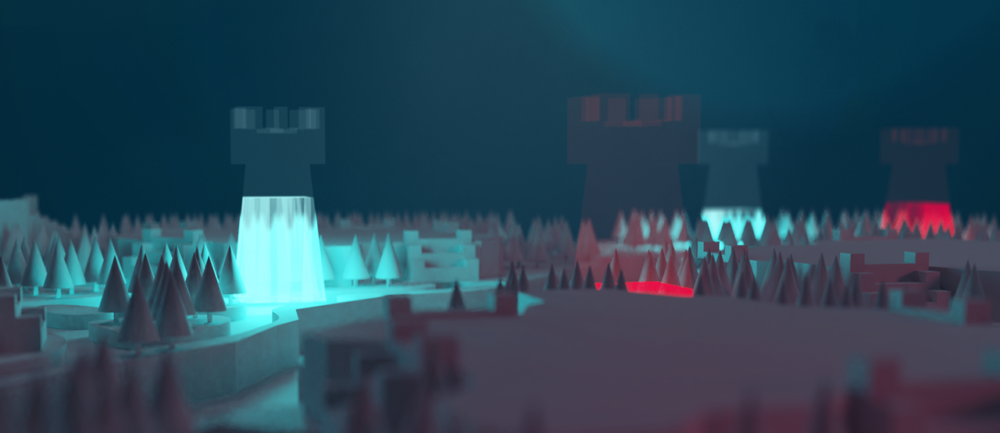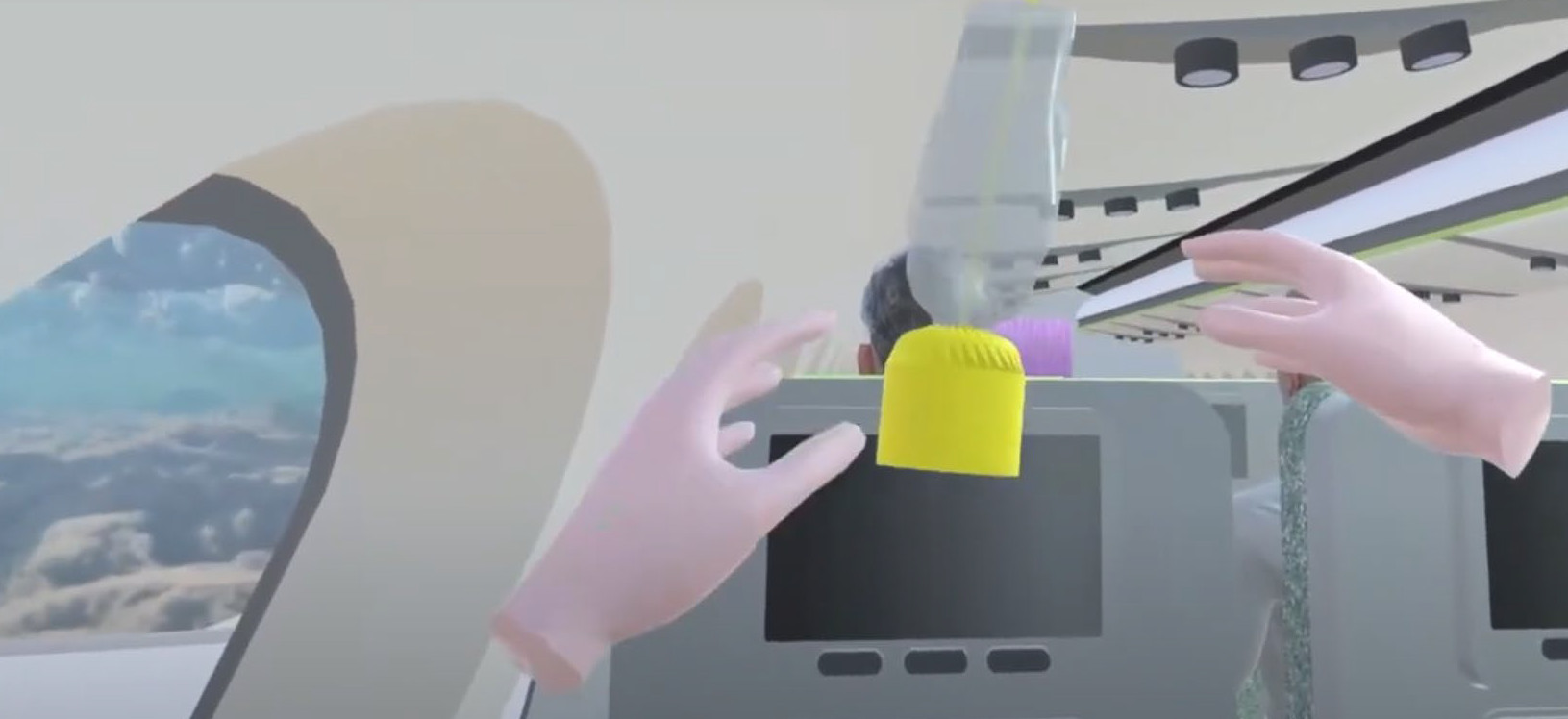SDU “Students´ semester projects with XR”
The teaching module was conducted over 20 weeks (Feb. to June 2024) as part of the semester projects for engineering students in the Game Development and Learning Technology program at the University of Southern Denmark (SDU).
A total of 36 students from the 4th semester participated in the module. The focus was on developing an Extended Reality (XR) applications designed to support or enhance learning processes across various settings. The module drew inspiration from “XR in Health education” and VR applications related to vocational education choices, such as by Erhvervstanken, Odense Kommune. Additionally, the students incorporated elements of sustainability promotion into their projects.
Teaching Design
The learning objectives included the ability to plan and implement both physical and digital prototypes for a learning application, spanning from the pre-analysis phase to the digital implementation.
Furthermore, students had to prepare a written report that explained the key features of the digital prototype and the design process, as well as make an oral presentation of key parts of the development process.
Additionally, students needed to be capable of explaining central theoretical learning paradigms pertinent to the project, reflecting on didactic and learning theory issues related to the use of technology in teaching contexts.
Content, activities
The course was conducted with a block of 4 hours per week for 12 weeks, followed by an additional 8 weeks dedicated to completing the project work. All 20 weeks constituted the project work period. Concurrently, students were introduced to the subject area of learning technology.
a) The SDU students planned and developed both a physical and a digital prototype of a learning application, covering all stages from pre-analysis to digital implementation.
b) They submitted a written report detailing the key features of the app and outlining the work process.
c) Additionally, the students prepared an oral presentation highlighting the essential aspects of the app.
d) Finally, they demonstrated an understanding of crucial theoretical learning paradigms relevant to the field, including the ability to reflect on didactics and theories related to the use of technology in educational settings.
The students documented their iterative design process, the learning-oriented didactic design, and the technical design of the learning technology equitably. The digital prototypes were developed using either Unity or other apps.
Learning products, self-chosen
– Human Anatomy – VR as an information and quiz app
– SOSU simulator – educational technology for health worker students
– Circuit Simulator – educational technology for engineering students
– AR SDU Adventure – map for new students
– Equations for beginners – VR to ease the learning of mathematics
– Chemistry simulation
– Cutting trees simulation – to be applied to the forester education (skov og naturteknikker)
Pedagogical methods:
The students worked in groups of 3-6 students and followed a project-oriented working method, where they had to obtain approval for their case idea, timetable, and various versions of their prototypes throughout the process.
Evaluations
The lecturer pointed at that the students successfully developed XR prototypes in Unity. Those collaborating with Erhvervstanken had benefited from easier access to users, which provided an advantage in the design process. Balancing development and identifying a suitable test group within a single semester can be challenging. Nonetheless, the students had demonstrated remarkable creativity and technical ingenuity in their digital prototypes.
Addtionally, the SDU students filled in an online survey, and the 3 of them were interviewed online. Extracts are published here.
Learning products, examples
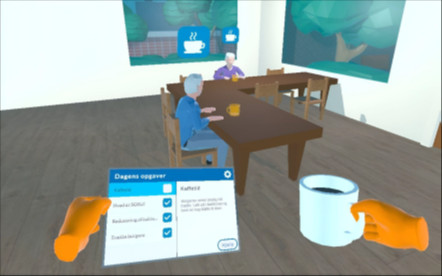
Virtual Reality: Nursing home
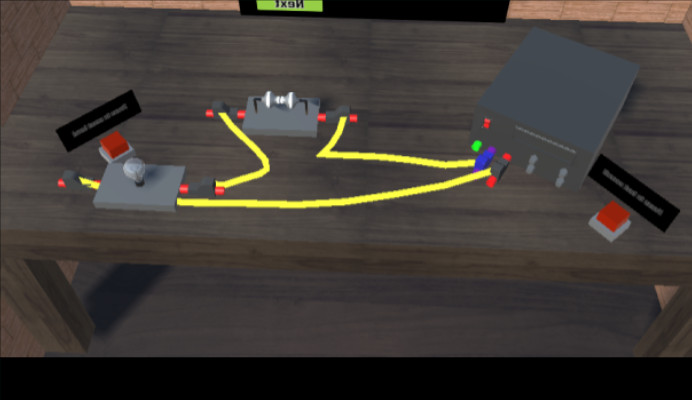
Educational technology for engineering students: Circuit simulator (video)
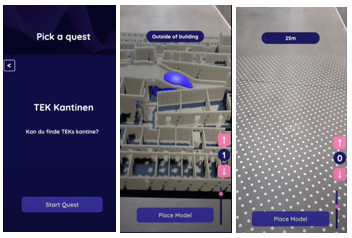
Augmented Reality: AR SDU Adventure – map for new students

Video: Chemistry simulation for lower secondary education
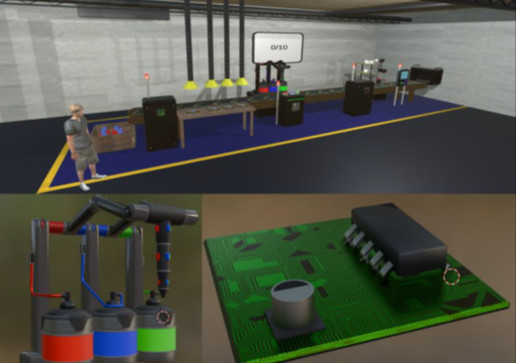
Virtual Reality: Experience the Automation Technician Education, video
Digital Production
The technologies selected for developing the digital prototypes were Unity for both Virtual Reality (VR) and Augmented Reality (AR).
The students employed iterative development methods, with a requirement to complete at least two iterations as part of the software development process. Additionally, they were required to create a low-fidelity prototype, such as a paper-based model.
Academic retrospective reflections: Students reflected in writing on how they could optimize the development process in hindsight. This included considering what choices might have been more effective with the knowledge gained by the end of the project, as well as what they had learned technically, how they had managed work organization within the group, adapted the case, divided iterations, and their experiences with testing.
User involvement was facilitated by engaging a lecturer from the University College UCL’s health education programs, along with experts and specialists from Erhvervstanken, Odense Municipality. Erhvervstanken, Odense Kommune.
I feel prepared to apply these elements in the gaming industry.
Student, 4th semester, SDU
I think it is a good idea to use VR to assist teaching, as it helps with exercises and creates more accountability.
Student, 4th semester, SDU
Digital Literacy
Digital literacy was not a primary focus of this module, and it was not directly addressed in the curriculum. However, students had the opportunity to engage deeply with VR technology, exploring its potential as a valuable tool for enhancing processes within the health and education sectors, both of which have significant societal relevance. This hands-on experience allowed students to explore how VR can be used to improve and qualify various processes within these critical fields.
Moreover, the module appeared having had a broader impact on the students’ intellectual development, particularly in fostering their critical thinking skills. Through their work with VR, students considered and discussed the broader implications of integrating virtual technologies into society. One of the key concerns that emerged was the potential for the virtual world to overshadow or even dominate the real world, especially in situations where there may not be sufficient resources to support both realms equally. This concern reflects a deeper understanding of the ethical and practical challenges that come with the advancement of digital technologies and their integration into essential societal sectors.
Overall, while digital literacy was not the explicit focus, the module succeeded in encouraging students to think critically about the role of technology in society and its potential long-term effects.
Gunver Majgaard, lecturer SDU

SDG goal #3: “Ensure healthy lives and promote well-being for all at all ages”
Environment
Across educational institutions: The students gained valuable insights into health education and into vocational education and training (VET), sparking their interest in potential careers that integrate technology within these sectors. For some, this experience opened their eyes to the possibilities of working with such technologies in these fields.
The added value for the educational sector became evident, as XR offers a “safe space” for training health professionals, allowing them to practice without the constraints of working with vulnerable patients or limited time slots.
Additionally, the students generated innovative ideas for using XR, such as providing access to hidden technical processes in industry, enhancing introductions to VET, and exploring its applications in the architecture and design sectors.


Students´ learning product with Virtual Reality: Cutting trees simulation – for the forester education, video (Skovsjov Showcase, J. Garde, 2024)


MYRE DK-DE has received financial support from PKP | Interreg Deutschland – Danmark.
In addition to the 35% co-financing, the three project partners have contributed significant own resources and engaged a wide range of network partners.


